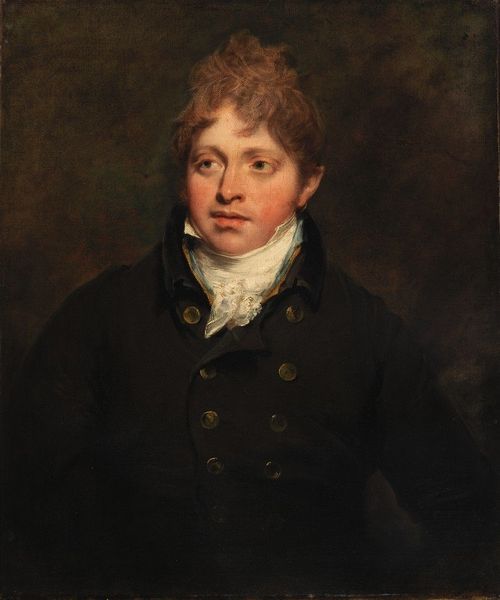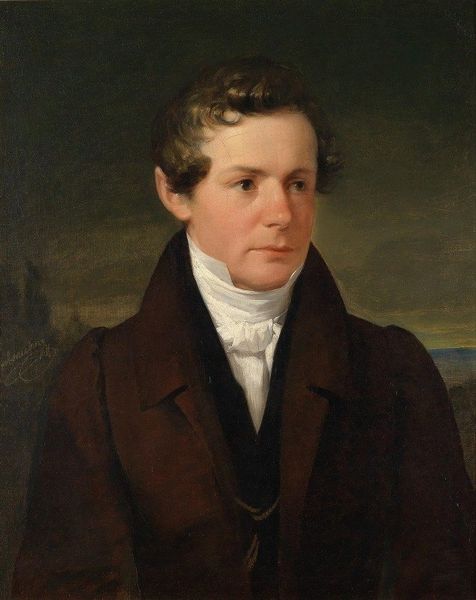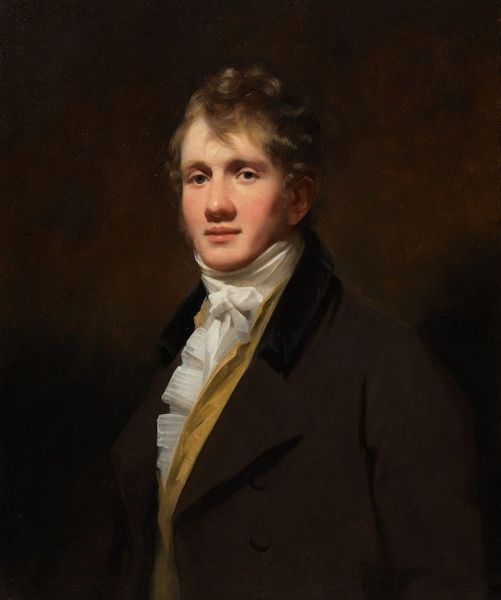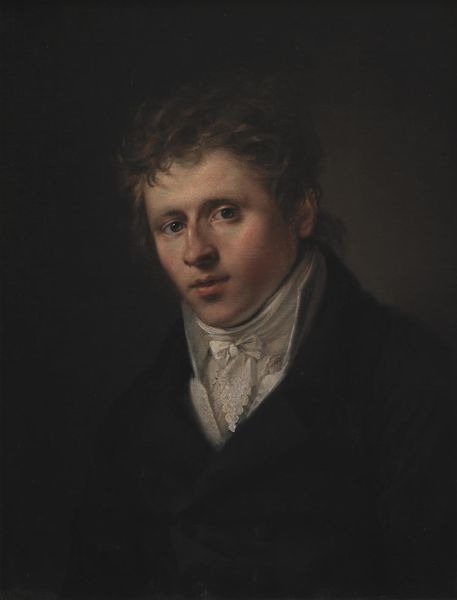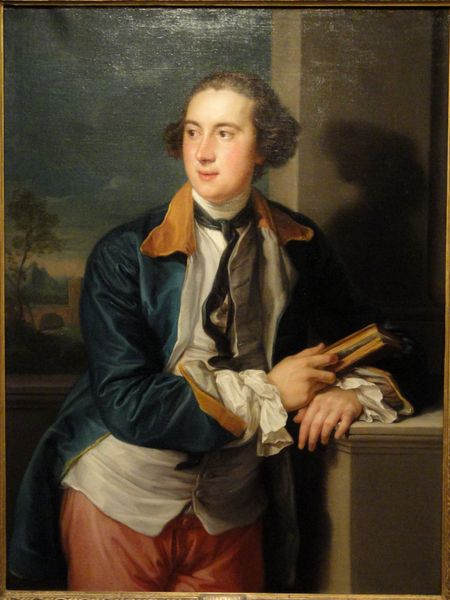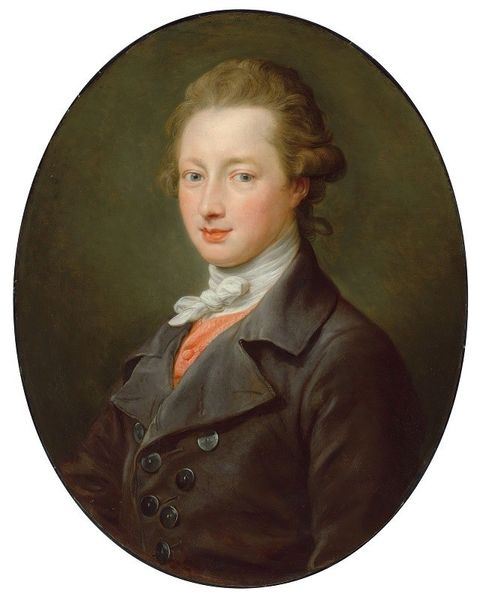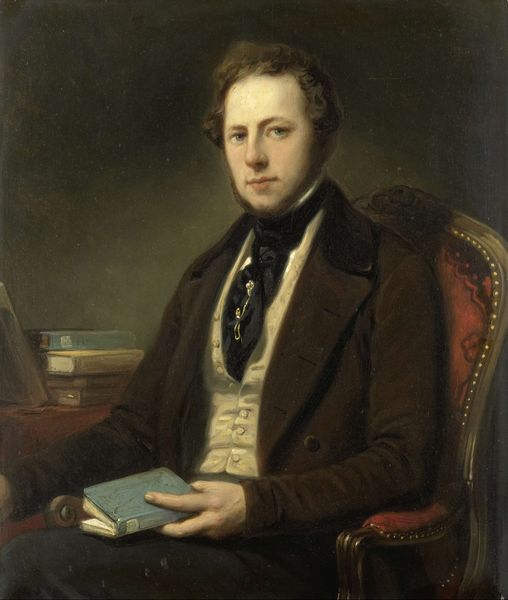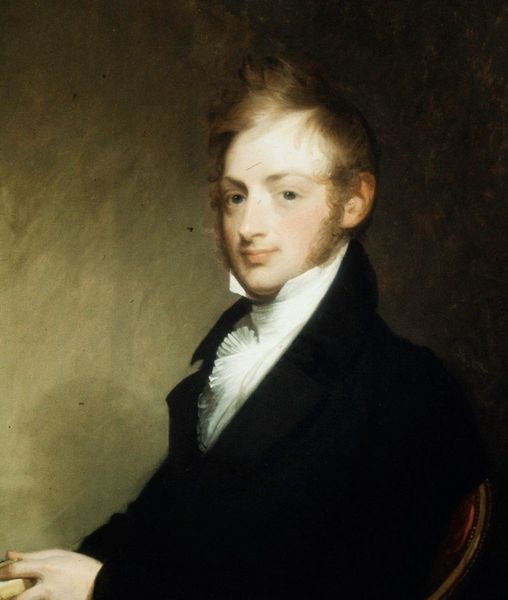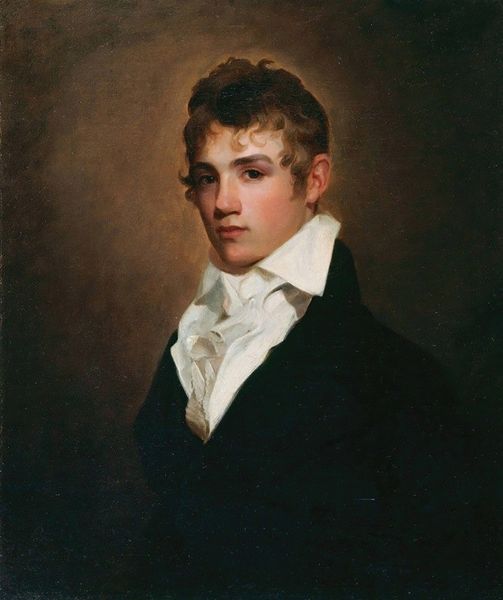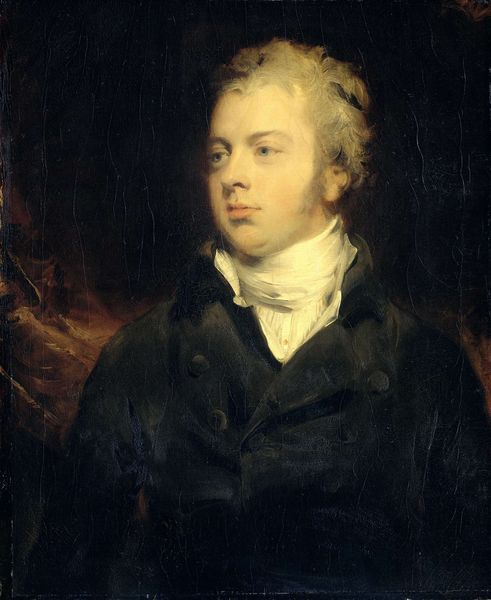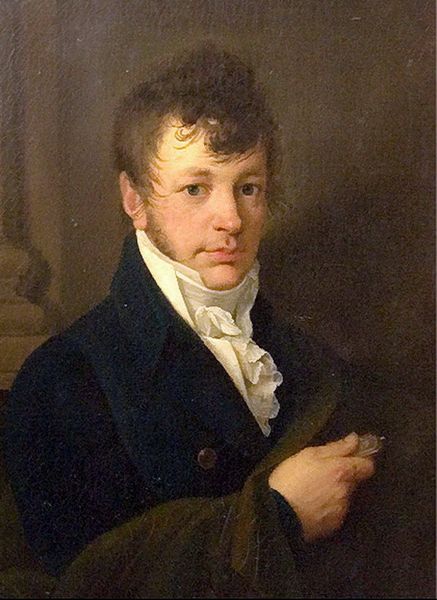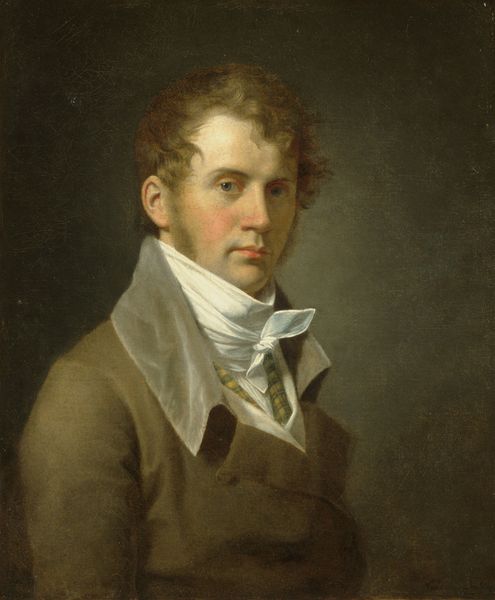
painting, oil-paint
#
portrait
#
figurative
#
neoclacissism
#
painting
#
oil-paint
#
classicism
#
history-painting
Copyright: Public Domain: Artvee
Curator: Batoni’s "Portrait of Thomas Orde, later Orde-Powlett and 1st Baron Bolton," painted in 1773, showcases a gentleman in poised repose. It’s a striking example of neoclassical portraiture, isn’t it? Editor: Yes, very refined! The colors seem muted, like old velvet. Is it meant to evoke a feeling of contemplation or subdued grandeur? Curator: I believe both! Batoni was highly sought after by British aristocracy for his ability to capture their sophistication during their Grand Tour. This portrait exemplifies that, doesn’t it? It almost romanticizes the sitter's station in life through its idealized representation. Editor: Indeed! Notice the placement of Orde-Powlett’s hand casually resting on what looks like a classical plinth and the scholarly book he holds. The composition seems meticulously arranged to convey intellect and social standing. Almost theatrical in a way. Curator: I think that is accurate. The use of light and shadow—tenebrism, if we are to be exact—also accentuates the sitter’s face, directing our focus toward his expression. Batoni certainly plays up the drama of portraiture! It would not be difficult to place this next to some history paintings from the same era. Editor: I find that fascinating—this play of dark against light gives it depth, an interesting choice considering the enlightenment's aesthetics from the period. Does his attire contribute to this representation? I am looking at the ornate detailing along his waistcoat, suggesting opulence and refinement. Curator: Precisely! Everything, from the subtle rendering of fabric to the subject’s gaze, points toward a cultivated elite identity. The painting invites us to consider what it meant to be wealthy and cultured in 18th-century England, but it also challenges our present understanding of class and societal expectations. Editor: Very astute observation! In retrospect, seeing these carefully crafted historical records brings awareness and understanding of how individuals want to be perceived and remembered, and the degree they went to in order to attain such goals. Curator: Agreed. What Batoni presents here isn't simply a depiction of Thomas Orde; it's an exploration of constructed identity within the conventions of neoclassical portraiture. Thank you for exploring with me, today! Editor: My pleasure! Indeed, this work remains a resonant depiction, offering endless threads of consideration!
Comments
No comments
Be the first to comment and join the conversation on the ultimate creative platform.
